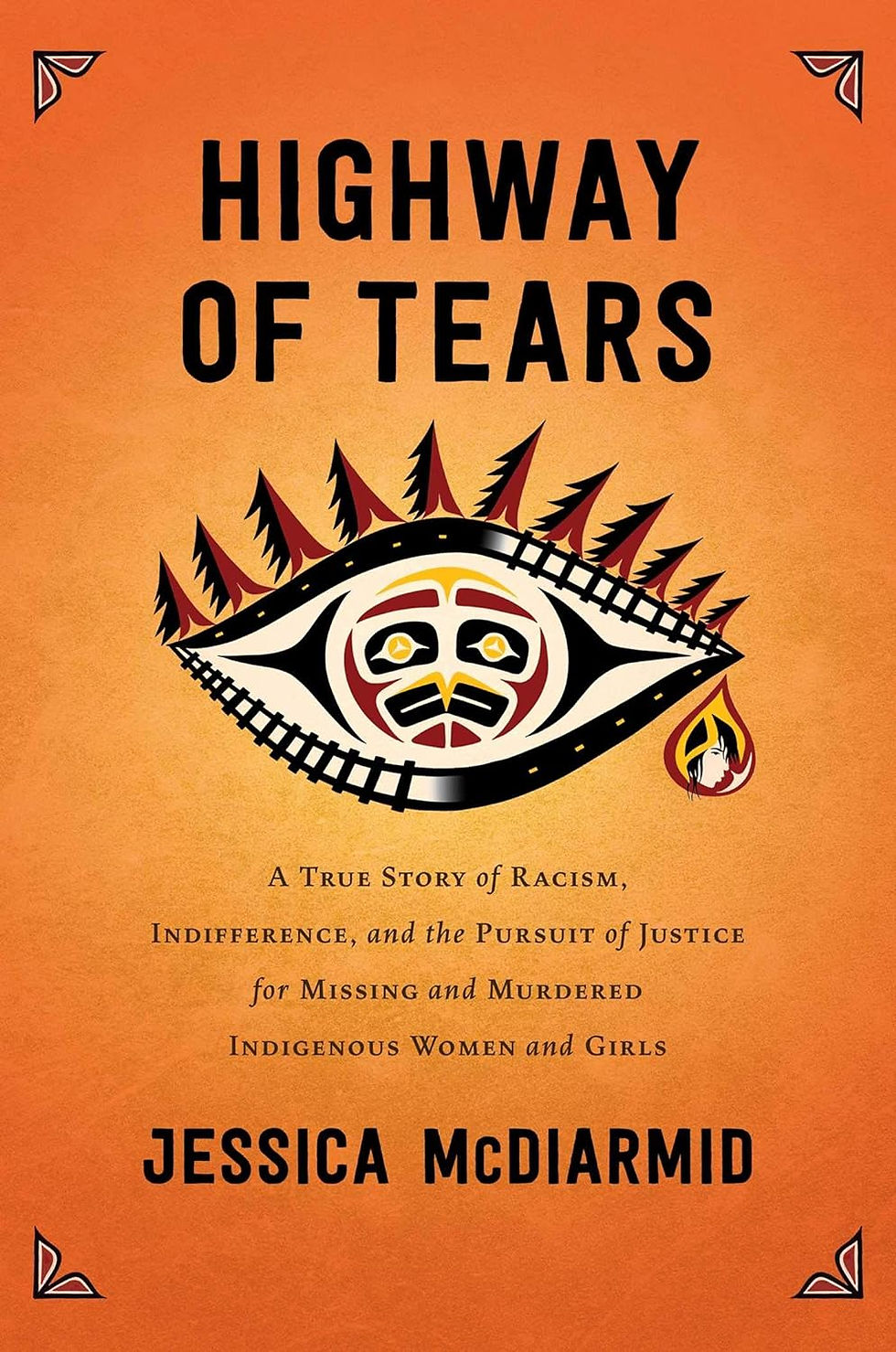Book Review: Highway of Tears
- Sophia Lobanov-Rostovsky

- Sep 30, 2023
- 3 min read
Updated: Oct 1, 2023

“Because I am an indigenous woman, I am six times more likely to be murdered than my non-Indigenous sister. I am considered high risk just by virtue of being Indigenous and female” – Mary Teegee, President of British Columbia’s Aboriginal Childcare Society.
Jessica McDiarmid’s Highway of Tears explores the crisis of missing and murdered Indigenous women and girls across Canada within the context of colonialism and structural racism. The ‘Highway of Tears’ is a nickname given to Highway 16, a 450-mile-long road which stretches across Canada’s western province of British Columbia from Prince Rupert to Prince George. Since the 1970s, more than thirty women and girls have disappeared or been murdered along the route, the majority of whom are Indigenous. Throughout the book, McDiarmid gives a voice to the victims of these crimes by poignantly describing some of their lives and fates, many of whose are still unknown. As an investigative journalist, she carefully interviews families who are still searching for their daughters, nieces, and sisters, and even joins them in an annual walk of the Highway, where families come together to seek justice for their women and girls. Importantly, McDiarmid reveals statistics and findings from many Indigenous-led organisations such as the Native Women’s Association of Canada, to ensure that Indigenous voices are consistently heard.
Interwoven within individual victims’ stories, McDiarmid contextualises the Highway of Tears as a microcosm of the violence experienced by Indigenous people across Canada, which is far more prevalent than that experienced by their non-Indigenous counterparts. Over the past 30 years, it is believed that more than 4,000 Indigenous women and girls have been murdered or disappeared in Canada, although the true value is unlikely to ever be known. Indigenous victims are often blamed for their fates, failing to address the systemic failures of society and of institutions who are responsible for their welfare. McDiarmid faults the Royal Canadian Mounted Police (RCMP), the Canadian government and social services who frequently neglect and mistreat Indigenous people. She also exposes the institutional racism of the media, which fails to bring attention to the disappearance of Indigenous people (according to the Journalists for Human Rights, Indigenous people are seven times less represented in the media than what should proportionally reflect the population). This collective inaction means perpetrators of violence against Indigenous women and girls are rarely prosecuted, thus perpetuating the crisis.
McDiarmid goes a layer deeper, explaining how high rates of violence against Indigenous women and girls is a direct result of colonialism, specifically delving into the impact of the Indian Act (1876-1985) which imposed federal control over Indigenous people and their land. The Act forced Indigenous communities to live on reserves, where traditional governance and social structures were dissolved and replaced with White, European models. A key part of the Indian Act was the residential school system which tore an estimated 150,000 Indigenous children away from their families and cultures. At least 4,100 died and many were sexually abused. Misogynist, patriarchal views replaced complementary Indigenous gender roles which had previously afforded women equal decision-making power over familial, political, and financial matters. As such, Indigenous women and girls face additive oppression and violence by nature of their intersectional gendered and racial identities. She, and many of the victims’ families, argue that these colonial patterns are so deeply embedded in Canadian society, that they continue to perpetuate cycles of intergenerational trauma, poverty, drug addiction, sex work, unemployment and crime among Indigenous women and girls.
While a heart-breaking read, the Highway of Tears makes a powerful argument for the need to acknowledge and educate on discrimination, racism and violence which pervades the lives of Indigenous women and girls across Canada, so that we can make steps towards breaking these cycles and achieving rightful justice.


